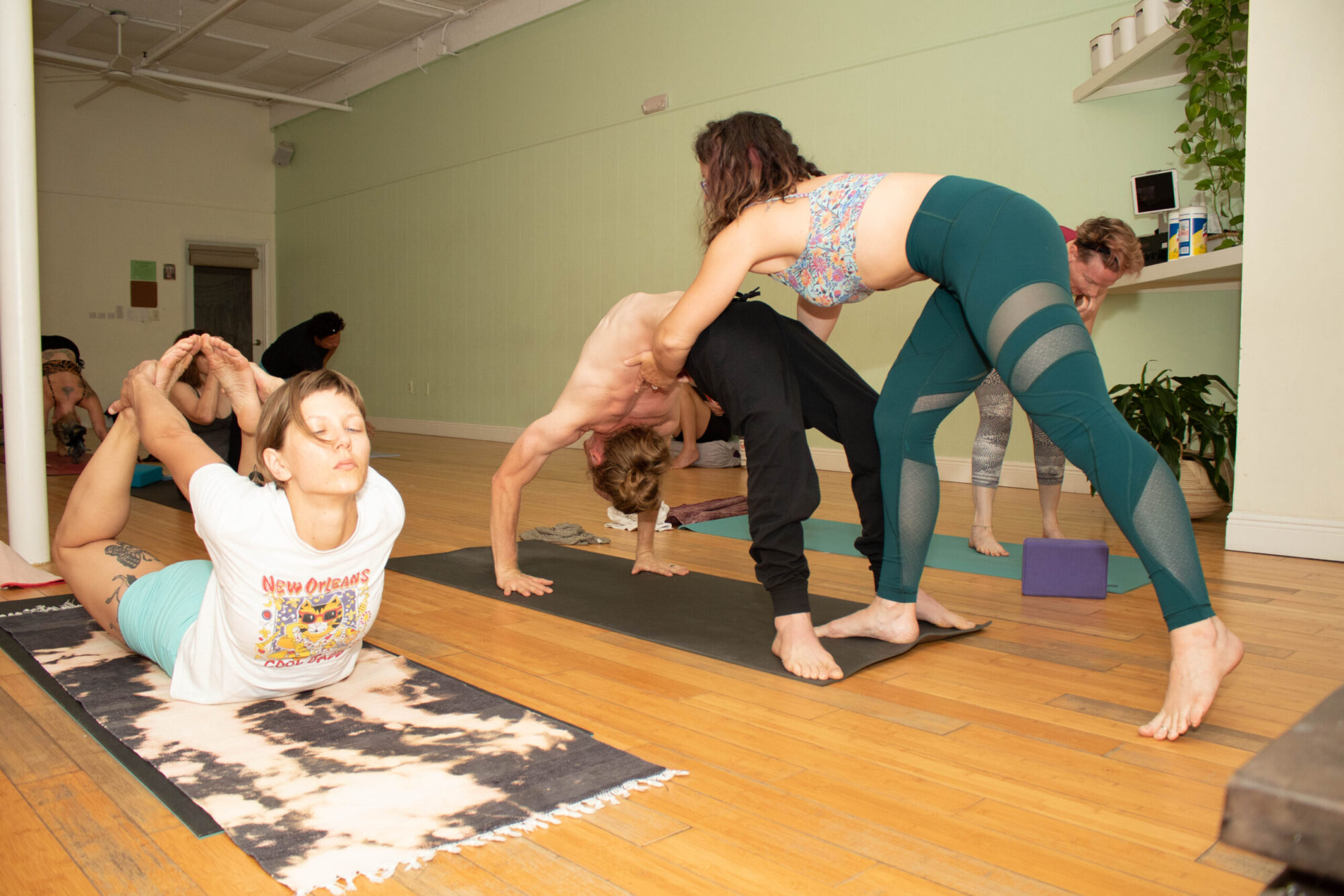The next component of the cakra aystem to learn, connect to and understand is the Svādhiṣṭhāna cakra. This cakra is located just in front of the sacrum and deals with healthy sexuality, humor, processing joy, seeking pleasure (raga). Mūlādhāra cakra is the origin and a vital aspect of evolvement and enlightenment. However, it is with an awakening and balancing of svādhiṣṭhāna cakra that the motivation, power, intention, attention, awareness and passion for comprehensive spiritual awakening are manifested. The awakening of Svādhiṣṭhāna cakra is the opening for the breaking open of brāhmā grānthi (the first of the major blockages in the energetic body)
Svādhiṣṭhāna cakra relates to water and corresponds to bodily functions having to do with fluids and liquid:
- Blood circulation
- Elimination of urine
- Reproduction
- Sexuality
- Flow and fluidity
- Surrender
As the center of sexuality, svādhiṣṭhāna cakra is also related to:
- Movement
- Sensation
- Emotions
- Pleasure
- Nurturance
When balanced and operating as awakened and nurtures, Svādhiṣṭhāna cakra opens the pathways for the beginning of enlightenment and pure joy in existence. Interactions with the world and community are rooted in clear and accurate emotional connections. Additionally, we will experience a state of oneness and bliss with the universal consciousness. Individuals with a healthy and awakened Svādhiṣṭhāna cakrademonstrate the following characteristics:
- These people ARE joy
- They light-up a room
- They perceive the positive in all the world around them
- When interacting with others they focus on people’s potential and possibilities instead of their downfalls
- Healthy and mutually respectful sexual encounters
- Strong ethical principles
- Work to make others happy and contribute positively to the world
- Vast knowledge of lives (past, present and future) may come
- A feeling of buoyancy as moving through life, as if walking on air
- HIghtened intuition
When Svādhiṣṭhāna cakra is imbalanced and not properly nurtured, our lives will include misplaced emotional needs, inappropriate and unreciprocated emotional and sexual desires, and/or an inability to maintain meaningful relationships. Additionally, one might experience:
- Extreme sadness, and an inability to enjoy life
- Major depression often develops, and professional help is imperative
- Only able to perceive negative aspects of life in the past, present or future
- All memories are viewed as sad and negative experiences
- Low self-esteem
- Negative self-talk
- Self-sabotaging behaviors
- Obsessive behaviors and thoughts
- Loneliness/Isolation
- Inappropriate/misplaced guilt
- Slow cognitive processes and low motivation
- Insomnia and other sleep related disorders
- Low vitality
- Poor appetite
- Constipation
- Low/non-existent sexual drive
- Water related phobias
Signs of an imbalanced Svādhiṣṭhāna cakra can be more challenging to detect than Mūlādhāra cakra because they affect the person on such a personal, intimate and private level. If you sense a student might need attention to this cakra, first be sure they’re demonstrating the signs of an activated and healthy mūladhara cakra before encouraging the powerful work within this cakra. Once the student is firmly rooted and confident and comfortable with their own root center, the following can be extremely helpful for awakening Svādhiṣṭhāna cakra:
- Visualization techniques
- Postures and activities to ‘open’ the pelvis
- Dancing
- Nauli Kriyā
- Positive affirmations
- Removing the temptations
- Embracing consistent and devoted yoga practices
- Try to help the student connect to fluidity in the pelvis
- Soft yet consistent connection to mūla bandha
- Encourage the student to move with fluidity through their practice, removing movements that seem robotic and/or aggressive
- Help the student find lightness as they move on the mat. Offer the option for extra breaths as the student find possibility to move without pounding themselves on the mat.
- Encourage them to playfully jump around in their practice
